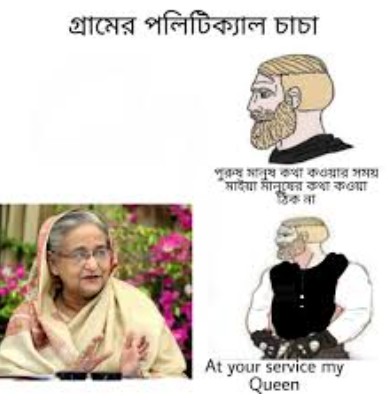Bangladesh’s meme community has been praised for transforming satire into a powerful tool for truth-telling, solidarity and civic resistance.
On behalf of Chief Adviser’s Press Wing , Deputy Press Secretary Apurba Jahangir hailed their success in inspiring courage, building community and shaping digital protest during the country’s most turbulent times.
Apurba lauded meme community for utilising satire to spread the truth in a lighthearted manner, which also aids in building courage and community. Meme pages, once seen as hubs for light-hearted humor, transformed into platforms of “protest and solidarity” during the July Movement in 2024.
“In the face of violent crackdowns by the authoritarian Awami League government during the Quota Reform protests and the July Uprising, these meme creators emerged as unexpected truth-tellers,” he said, recalling moments around this time last year, reports UNB.
As Bangladesh’s youths flooded the streets demanding reform in July last year, Apurba recounted the parallel resistance unfolding in the online comment sections and timelines of Facebook.
“Bangladesh MEME community, take a bow! This country will always be grateful,” Apurba said, stressing that Bangladesh’s meme movement is more than a moment, it is a message which was heard loud and clear.
He added that fear was turned into punchlines, and propaganda was met with digital resistance that gave people courage. “They became digital support networks, sharing real-time updates, organising help, and offering critical information to those involved in the protests,” said the Deputy Press Secretary.
According to him, they served a role similar to that of Shadhin Bangla Betar during the 1971 Liberation War, a “decentralised source of hope and solidarity.”
Some memes even made their way onto walls as graffiti, showing how online resistance spilled into the physical world.
After the protests, when devastating floods hit the Feni-Noakhali districts, this same network of meme pages raised over Tk 1,700,000 to support those affected.
“It was a powerful expression of patriotism—young people using their platforms to help in a time of national crisis,” Apurba said. “Often, we fail to recognise how cultural expressions can define political movements. But this generation did. They knew memes weren’t just for fun—they were forms of protest, critique, coordination and strength,” he added.
In a media environment dominated by censorship and fear, Apurba said, these meme pages kept people informed, engaged, and connected.
“They showed a new way of participating in civic life—one shaped by the digital world,” he said.
Their actions are a reminder that resistance does not always come as protests or headlines.
“Sometimes, it’s a viral meme. Sometimes, it’s a safe space in a comment thread. Sometimes, it’s a page admin staying up all night to confirm information and keep people updated,” Apurba said.
This movement may have started online, he added, noting that it was grounded in real compassion, real effort and real unity.
“It’s a testament to the dedication and love that Bangladeshi youth have for their country,” Apurba said.


